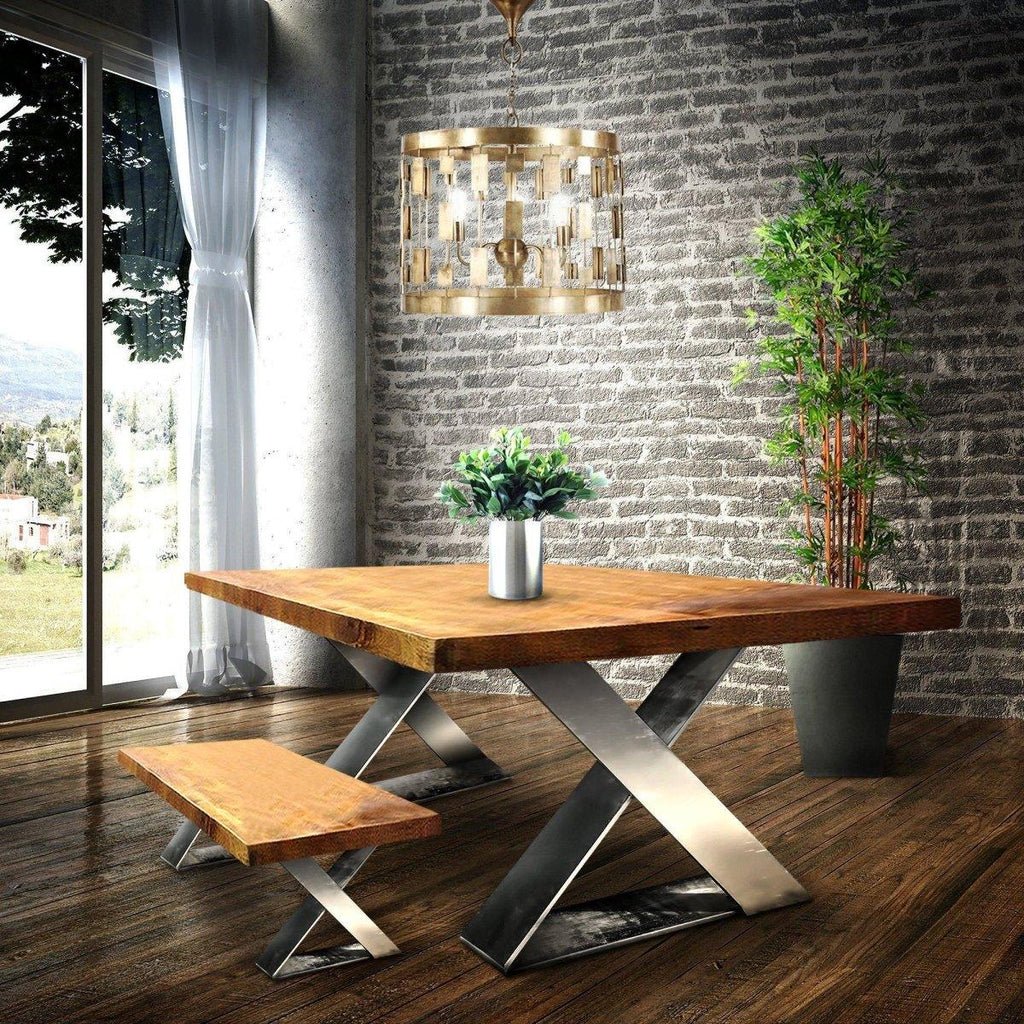The Top Trends in Dining Room Table Legs You Need to Know
The Top Trends in Dining Room Table Legs You Need to Know
Blog Article
From Traditional to Modern: Find the Suitable Dining-room Table Legs for Your Design
While timeless styles such as cabriole and turned legs evoke a feeling of timeless sophistication, contemporary designs like hairpin and geometric options present an opportunity for striking aesthetic interest. As you take into consideration these aspects, the concern continues to be: how can you seamlessly integrate these varied leg styles to develop an unified dining experience?
Recognizing Table Leg Styles
The variety of dining space table leg styles can dramatically affect both the aesthetic appeals and capability of the area. Each leg design contributes special visual aspects and sensible functions, providing to diverse style choices and usage requirements. Comprehending these designs is vital for choosing the appropriate eating table that straightens with your general interior design vision.
As an example, conical legs provide a clean, classic look that can enhance an area's style, while stand bases give security and maximize legroom, making them ideal for smaller rooms. Barrette legs, a trademark of mid-century modern design, introduce a commercial panache, enabling an airy, open feel. Similarly, trestle legs stimulate rustic appeal, providing durable support and a feeling of eternity.
Wood legs can bring heat and structure, whereas metal alternatives frequently convey a streamlined, modern vibe. Inevitably, recognizing table leg designs is essential for developing a cohesive eating location that mirrors individual style while ensuring usefulness and comfort.
Typical Table Leg Options
When choosing dining-room table legs, typical options commonly personify timeless sophistication and workmanship. These designs reflect an abundant heritage and a commitment to quality, making them suitable for those that appreciate traditional aesthetics.
Among one of the most iconic standard leg styles is the cabriole leg, identified by its elegant bent shape. This design frequently includes attractive makings and is most generally located in Queen Anne and Chippendale furnishings. An additional preferred alternative is the transformed leg, which flaunts a collection of smooth, rounded forms that offer a timeless appearance while preserving stability.
Additionally, the straight leg, while basic, uses a strong and basic structure that can blend perfectly with a variety of tabletop styles. For those drawn to ornate detailing, claw-and-ball feet legs evoke a feeling of majesty and can work as a spectacular focal point in any dining room.
Last but not least, stand bases, although not purely legs, offer an alternate conventional option that permits ample legroom and can be beautifully sculpted. Each of these standard leg styles adds to the total atmosphere of a dining-room, weding function with visual charm.

Modern Table Leg Styles
Modern table leg designs supply a diverse variety of designs that emphasize cutting-edge materials and clean lines. These layouts often focus on functionality while functioning as striking prime focus within an eating space. Minimalist aesthetic appeals prevail, with legs crafted from products such as metal, glass, and engineered wood, which add to a airy and modern feeling.
One prominent layout is the hairpin leg, defined by its slender, conical structure that gives stability without overwhelming the tabletop (dining room table legs). This design is frequently found in mid-century modern furnishings and can easily complement numerous eating table forms. One more pattern is making use of geometric shapes, where legs might handle angular or asymmetrical kinds, including visual interest and a touch of virtuosity

Mixing Styles for One-of-a-kind Spaces
Frequently, homeowners seek to create one-of-a-kind eating rooms that reflect their personal style by mixing various design components. This approach permits the incorporation of varied aesthetic appeals, resulting in a harmonious yet distinct setting. Matching a rustic wooden table with streamlined, contemporary metal legs can develop an appealing contrast that raises the area's general charm.
In addition, incorporating vintage table legs with modern table tops can evoke a sense of background while preserving a modern sensibility. Such combinations not just display specific taste however also motivate creativity, enabling home owners to curate a room that feels both personal and welcoming.
Color plays a crucial duty in this mixing procedure; picking table legs that match or comparison with the existing color plan can enhance aesthetic passion. Whitewashed legs can soften the boldness of a dark table surface area, developing a balanced visual.
Tips for Selecting the Right Legs
Choosing the right table legs is important for attaining both functionality and aesthetic appeal in your dining room. Begin by thinking about the general design of your space. Standard settings gain from legs that include intricate makings or turned layouts, while modern areas might call for sleek, minimal designs.
Following, examine the elevation and security helpful resources of the legs. dining room table legs. Basic table vary in between 28 to 30 inches in elevation, so make sure the legs enhance this measurement for convenience. Additionally, durable products, such as hardwood or steel, can enhance security and durability
Evaluate the leg form too-- alternatives include directly, tapered, or pedestal designs. Straight legs provide a classic look, while tapered legs can include a touch of elegance. Pedestal bases provide adequate legroom and are optimal for smaller areas.
Verdict
In recap, choosing the optimal dining area table legs calls for mindful factor to consider of both modern-day and standard designs. By balancing leg style, elevation, and product with the total decoration, a natural and inviting ambience can be accomplished.
The range of eating room table leg styles can significantly affect both the visual appeals and capability of the room. Ultimately, understanding table leg styles is vital for creating a natural eating location that mirrors personal style while making certain usefulness and comfort.One of the most renowned traditional leg designs is the cabriole leg, defined by its elegant curved form. Straight legs provide a classic look, while conical legs see here now can include a touch of sophistication.In recap, picking the ideal dining area table legs calls for careful factor to consider of both traditional and contemporary styles.
Report this page